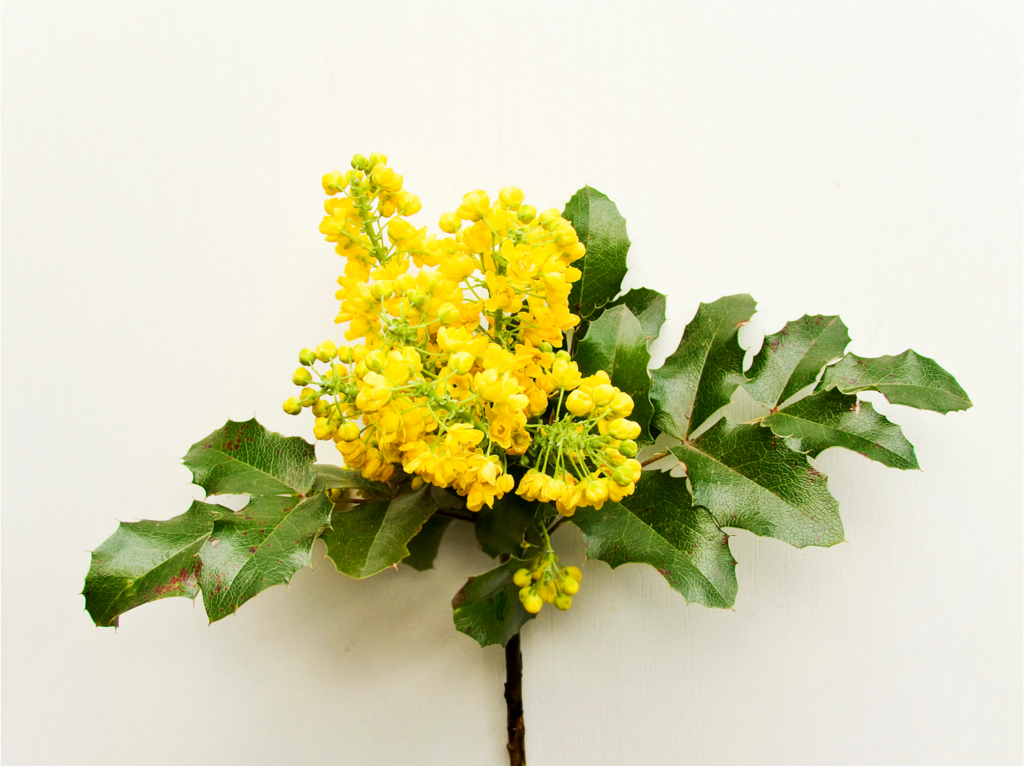By Dr. Leigh Siergiewicz
At first glance, Oregon grape looks a lot like holly, until you see the bright yellow blooms currently scattered all over Vashon and along the coast from British Columbia to southern Oregon. Later in the season, the flowers will be replaced by edible blue berries.
The stems and roots of Oregon grape are yellow under the bark because of a medicinal compound called berberine, which is also present in other plants. This bright yellow has been traditionally used as a dye, and medicinally the plant is as strong as the color.
Many herbs in the Western tradition have longstanding, documented uses; however, because Oregon grape is native only to the Pacific Northwest coast, it is newer on the scene of herbal medicine. The most commonly used medicinal part of Oregon grape is the root, which can be made into a tea, tincture, or consumed in capsules. Modern scientific studies have found Oregon grape to be very helpful in improving human health; uses of the whole plant include treatment of weak digestion and liver function, dry skin, poor metabolism, and lymphatic congestion.
Most commonly, in current naturopathic and functional medicine, Oregon grape is processed into capsules of the active constituent, berberine, which is a potent antibiotic, antifungal, and blood sugar stabilizer.
A systematic review and meta-analysis of 37 randomized controlled trials, completed in 2022, found that berberine is effective at lowering glucose and does not contribute to adverse events or hypoglycemia. Berberine was also found to reduce high levels of cholesterol in a 2022 systematic review and meta-analysis of 16 studies. Mild gastrointestinal side effects were present, and the effect was different in men versus women, so more research is definitely warranted to understand the benefits.
A 2016 in vitro study found that berberine was effective at combating fluconazole-resistant candida. Fluconazole is an antifungal drug, and candida is a common fungal infection in humans. A 2014 study found that using berberine in conjunction with pharmaceutical antibiotics is helpful when treating antibiotic-resistant infections.
I have used both isolated berberine and whole-herb Oregon grape for many individualized treatments with my patients. If you would like to look more closely at the research summarized above, and see some additional reading resources, please visit this article at vashonloop.com. This research is just a tiny sample of the uses and benefits of Oregon grape!
Two other references that you may find useful are “Plants of the Pacific Northwest Coast: Washington, Oregon, British Columbia and Alaska,” by Jim Pojar and Andy MacKinnon, and “The Earthwise Herbal: A Complete Guide to New World Medicinal Plants,” by Matthew Wood.
Leigh Siergiewicz, ND. Schedule online at: Betulanaturopathic.com

